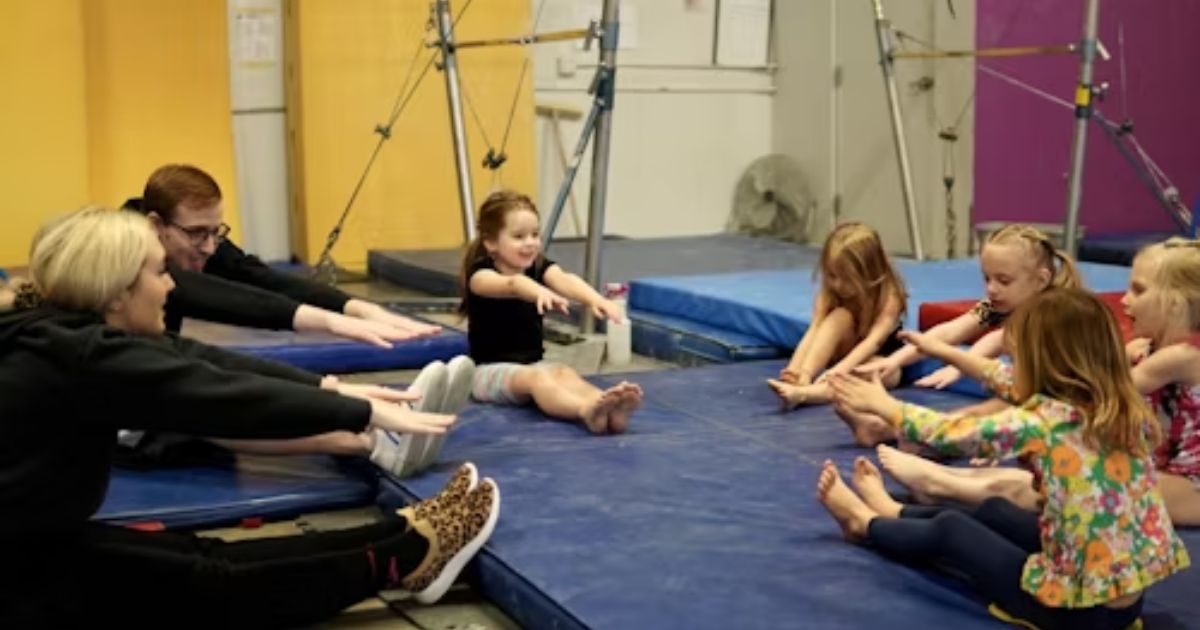Getting kids excited about exercise isn’t always easy, yet it remains one of the most effective ways to develop lifelong healthy habits. As screen time and sedentary activities become increasingly prevalent, promoting physical activity presents a growing challenge. Kid-Friendly Fitness Tips offer creative and engaging approaches to physical activity that resemble play rather than routine. From outdoor adventures and indoor obstacle courses to imaginative games and challenges, these strategies support an active lifestyle during the formative years.
The Importance of Building Healthy Habits Early
Incorporating regular physical activity into a child’s routine is essential for their overall development, impacting their physical, emotional, and mental well-being. The benefits of exercise extend beyond just staying fit—it plays a crucial role in overall well-being. It offers numerous benefits, including enhanced cardiovascular health, improved mood, and sharpened focus, which help children feel energized and more engaged in their daily activities. However, the true challenge lies in fostering a love for physical activity that extends beyond traditional exercises like push-ups or running. The key is making exercise fun, exciting, and something children eagerly anticipate.
Children are more likely to adopt physical activity as a lifelong habit when it is framed as an enjoyable and interactive experience, whether through sports, games, or playful activities. By focusing on activities that children find fun, they develop a natural inclination to stay active, viewing exercise as an enjoyable part of their routine rather than a chore. Over time, this positive relationship with fitness becomes ingrained, forming the foundation for healthy habits that will persist throughout their lives. These habits promote better physical health and improve emotional well-being, self-esteem, and a positive outlook.
Top 6 Kid-Friendly Fitness Tips Every Parent Should Know
1. Family-Friendly Hikes
One of the most straightforward and enjoyable ways to get kids excited about exercise is through hiking. Hikes can be a fantastic way to introduce children to outdoor adventures while providing an excellent workout.
- Discovering New Trails: Start by finding kid-friendly trails that are easy to navigate but offer the excitement of exploration. Seek out trails with exciting features, such as streams, caves, or rock formations, to spark kids’ curiosity and keep them engaged.
- Fun Scavenger Hunts: Turn your hike into a nature scavenger hunt. Create a list of items for the kids to find along the way—like a specific type of flower, a rock of a particular color, or animal tracks. This makes the hike feel more like a game than a walk in the woods.
- Educational Opportunities: Turn your hike into a mini-adventure, where every step is an opportunity to teach kids about the wonders of the environment. Point out different types of trees, insects, or birds. A hiking trip can quickly become an outdoor classroom, making learning a fun and interactive experience.
- Snacks and Rest Stops: Be sure to bring along healthy snacks and take frequent rest breaks. This can help maintain high energy levels and allow kids to enjoy the experience without becoming too tired or bored.
Hiking is a fantastic way to get kids moving while sparking a lifelong love for the great outdoors.
2. Fun Games to Keep Kids Active
Games are an incredible tool for keeping kids active while ensuring that exercise never feels like a chore. Here are a few fun game ideas that will get them moving:
- Tag Variations: Classic games like tag can be even more exciting with fun twists. Try “freeze tag,” where kids must stay frozen until another player unfreezes them, or “shadow tag,” where players must tag each other’s shadows.
- Obstacle Courses: Set up an obstacle course in the backyard or a local park. Use everyday items like chairs, ropes, and cones to create challenges that require crawling, jumping, and running. Kids will love competing to see who can complete the course the fastest, and it’s a great way to build strength, coordination, and agility.
- Dance Parties: Turn up the music and host a family dance party. Not only will kids burn energy, but they’ll also have a blast showing off their best dance moves. Consider creating a fun playlist with their favorite tunes and let them take turns picking the songs.
- Balloon Volleyball: A fantastic game that works just as well indoors as it does outside. Use a balloon instead of a ball and encourage kids to keep it off the ground. Balloon volleyball helps improve hand-eye coordination and can be played with as few as two players or in teams.
By turning fitness into a game, kids will be less likely to view it as a task and more likely to see it as a fun activity to look forward to.
3. Indoor Obstacle Courses
Getting kids to stay active on rainy days or during winter can be challenging. However, setting up an indoor obstacle course can be exciting and keep them moving and engaged.
Using Household Items: Use furniture, pillows, and even blankets to create an obstacle course in your living room or hallway. Kids can crawl under tables, leap over pillows, and scramble across couches as they race through the course.
- Timed Challenges: Create a challenge where kids must complete the obstacle course within a specific time frame. Time them with a stopwatch and encourage them to beat their record. This will bring a fun burst of competition and excitement to the mix.
- Incorporate Skills: Include activities in the course that involve balance, such as walking across a line of tape or balancing on a low beam (a piece of sturdy wood or a rolled-up towel). Other activities could include jumping jacks, hopping on one foot, or doing short stretches.
Indoor obstacle courses are a great way to keep kids active during inclement weather, and they can be set up with minimal effort and cost.
4. The Power of Sports
Teaching kids a sport or getting them involved in one they already enjoy is an excellent way to keep them active while fostering teamwork, discipline, and a sense of accomplishment. Here are a few sports ideas:
- Soccer: Kick a ball with your kids in the backyard or park. Introduce them to basic soccer skills, such as dribbling, passing, and shooting. Soccer is an excellent cardiovascular exercise and helps improve coordination.
- Basketball: Shooting hoops is a fun and active way to keep kids moving. If you don’t have a hoop at home, try setting up a mini hoop or heading to a nearby park. Encourage them to practice their dribbling skills and take plenty of shots—it’s a great way to build confidence and burn off energy!
- Tennis: Whether hitting a ball against a wall or playing a simple game in the backyard, tennis is an excellent way to develop hand-eye coordination and endurance.
- Swimming: If you have access to a pool, dive in—swimming is one of the best full-body workouts for kids! It’s not only fun but also gentle on growing joints, making it a win-win for active play and fitness.
Sports teach kids essential life skills while keeping them active, so it’s worthwhile to explore different options to see which ones they enjoy the most.
5. Yoga and Stretching
Yoga isn’t just for adults—it’s a fantastic way for kids to stretch, relax, and build strength, too! Introducing yoga to kids at a young age can promote flexibility, balance, mindfulness, and relaxation.
- Kid-Friendly Yoga Classes: Many online platforms offer classes specifically designed for children. These classes utilize fun themes, such as animal or superhero poses, to engage children. They can be an excellent way for kids to stretch, build strength, and calm their minds.
- Partner Yoga: Practicing yoga together as a family is a fun and effective way to promote bonding. Try simple poses that require two people, like partner balance poses or stretching poses where kids work together to hold a position.
- Mindful Movement: Incorporating mindfulness with movement can help children manage stress and develop body awareness. You can practice breathing exercises together and teach them simple techniques for relaxation and focus.
Yoga is an excellent way to incorporate flexibility and mindfulness into a child’s fitness routine, and it can be adapted to suit all skill levels.
6. Making Exercise Part of Daily Life
Ultimately, helping children view exercise as an integral part of their daily lives is crucial for long-term success. Here are some practical ways to incorporate fitness into everyday activities:
- Active Commutes: Walk or bike with your child to school or the store instead of driving. Not only does this encourage kids to be physically active, but it also sets a great example for staying active.
- Chores as Exercise: Turn Chores into Mini Workouts. Get kids involved by having them help with tasks like vacuuming, mowing the lawn, or tidying up the yard—it’s a fun way to accomplish tasks together! These everyday tasks can be a fun and active way to bond while checking off items on the to-do list.
- Active Screen Time: Encourage kids to take movement breaks during screen time. For every 20 minutes of watching TV or playing games, have them engage in a short physical activity, such as jumping jacks or stretching.
By embedding exercise into daily routines, children will learn that physical activity is an integral part of life, not something extra or optional.
Jump, Run, Play: Making Exercise a Kid-Friendly Habit
Making it fun, engaging, and part of their daily routine is the key to getting kids excited about exercise. Whether through family hikes, active games, or sports, there are endless ways to keep kids moving. The more fun and varied the activities are, the more likely children are to develop a lifelong love for physical activity. By making exercise an enjoyable part of their routine, you’re setting them up for a lifetime of health, happiness, and well-being. So go ahead—put on your sneakers and make exercise an adventure!




